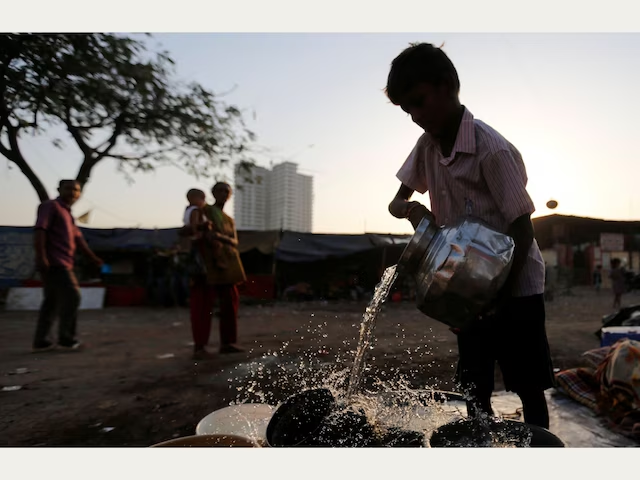Shahapur taluka in Thane district, renowned for its pivotal role in supplying water to the Mumbai Metropolitan Region (MMR) through dams like Bhatsa, Modak Sagar, Tansa, and Madhya Vaitarna, finds itself ensnared in a multifaceted water crisis.
Despite experiencing copious monsoon rainfall, with last year recording between 3,500-4,000 ml, and benefiting from the flow of major rivers like Bhatsa and Kalu, the taluka grapples with acute water shortages, a recurring saga impacting 126 out of its 148 villages this summer.
The demographic fabric of Shahapur is predominantly woven with Adivasi communities, residing in villages nestled amid hills such as Kasara, Khardi, Shirol, and others. Despite the Zilla Parishad’s provision of drinking water via tankers to 96 villages, logistical challenges persist, with water often being deposited into wells situated far from hilltop settlements, exacerbating the plight of residents who endure arduous journeys to procure water. Amidst this predicament, women shoulder the burden of fetching water, trekking several kilometres under the scorching sun, with infants and children in tow, a daily ordeal reflecting the gravity of the situation. Furthermore, the water supplied, albeit intermittently, is often turbid and unfit for consumption, contributing to prevalent health issues, as noted by local medical practitioners who cite a surge in stomach ailments among residents.
In the realm of development, residential projects in Shahapur languish in limbo, deprived of occupancy certificates and clearances due to the absence of assured water supply, impeding infrastructural progress and exacerbating housing shortages. Allegations of corruption and mismanagement shroud the implementation of schemes aimed at providing tapped water to residents, amplifying public discontent and underscoring governance lapses.
Notably, the Jal Jeevan Mission’s 189 schemes earmarked for water supply in Shahapur falter amidst accusations of malfeasance, with a significant portion reliant on the Bhavli pumped storage hydropower project in neighbouring Nashik district. Although progress stands at 60%, pending forest department approvals prolong project timelines, impeding the alleviation of Shahapur’s water woes.
As stakeholders grapple with the multifaceted dimensions of Shahapur’s water crisis, a comprehensive re-evaluation of governance frameworks and infrastructure initiatives is imperative to address systemic inefficiencies and ensure sustainable water management, safeguarding the welfare of communities reliant on this indispensable resource.




